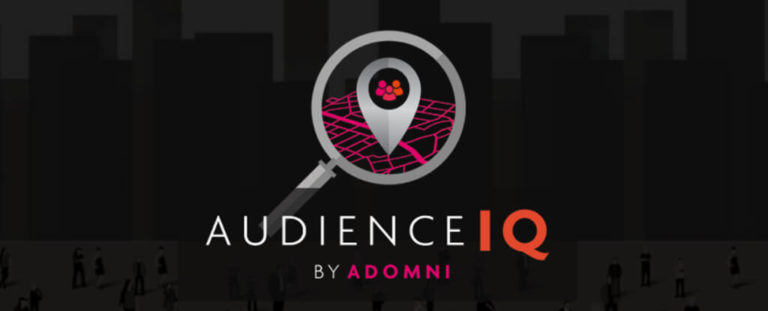Innovator Insights: How Video IRL Transforms Real-World Engagement with Adomni’s Eileen Crossin
By Mercedes Cardona for Brand Innovators
Published: June 6, 2024
Marketers often perceive out-of-home advertising as an extra topper to their campaigns, just one more channel they can add to the media mix, to drive traffic or brand recognition. But with an assist from technology, creative partnerships and a focus on relevant content, it can be much more.
Out-of-home has traditionally been considered with a “real estate mindset” built around locations and not a consumer mindset that focuses on the content of the message, says Eileen Crossin. Since joining Adomni in 2024 as chief growth officer, she has focused on changing the conversation around out-of-home ads.
“When a brand or an agency thinks about out-of-home—or digital out-of-home, or programmatic digital out-of-home—there is often a perception that comes along with it,” says Crossin. “The opportunity that I see for the channel and the industry, and Adomni specifically, is to help the media landscape—brands, agencies, consumers—better understand how this is more about video in the real world and performance marketing opportunities, and less about the traditional perspective of out-of-home.”
Adomni, a “real-world video ads platform” is leveraging dynamic OOH—digital displays that can be constantly updated, segmented by dayparts and even personalized with an assist from geolocation and other technologies. The channel can be much more engaging, contextualized and measurable than the static billboards of the past, says Crossin, a former head of agency partnerships at TikTok.
“There’s a much more complex omnichannel media mix, and we want to show up in that conversation,” says Crossin. “We’re talking about real-world video. We’re being much more thoughtful about the brand-to-consumer experience: One that’s not only content led, but digital first in other ways like a more data-driven approach to planning and buying.”
Creating a content-led experience can include branded content, as well as original content and partnerships with social media content creators. Adomni contributes the reach of a million screens globally and a hundred billion audience impressions served on a monthly basis. It has its own in-house content solution, called Cookie DOOH, but it also relies on extensive partnerships with content creators.
“The experience of working for a social media platform taught me that creators are incredibly influential in the purchase journey and have really changed the game,” said Crossin. “There isn’t necessarily that same journey when you are working with creators, where you have to go from top of funnel to bottom of funnel. You can create awareness and engagement in the same ad, especially with our Shopping OTG ad product where consumers can buy from video ads on real world screens, while on the go. We want to take some of those digital-first principles and apply them to the real world.”
Working with influencer agencies helps create higher ROI for brands, transforming how brands engage their audience, says Crossin. The way brands engage through influencers—leveraging education and entertainment in their content—is widely different from the way they engaged through out-of-home in the past, she notes.
Creator partnerships take OOH further than merely remixing creative meant for other media. They “create a lot of relevance, a lot of modernization, a lot more omnichannel amplification for activation,” said Crossin. “We think it can deliver better performance results for campaigns because we know creators perform, we know social media content is less about advertising and more about a value exchange, so consumers will expect brands to show up in the same way cross-channel.”
Adomni tries to leverage those connections in products such as Shopping OTG (On the Go) which enables a consumer to engage with the brand via a QR code in the ad and access additional creator-led content. Crossin noted Adomni recently partnered with the data solutions company Kochava to offer a new product, Outside In, which allows advertisers running real world video campaigns to retarget the consumers on CTV to drive incrementality for brands.
“It’s about bringing your video content, your creators, your social strategy to the real world. To engage with consumers in the same way, which is how consumers want to engage now, how they want to connect with brands,” says Crossin.
Automation and technology such as QR codes and geolocation have also aided in the measurement and attribution of OOH efforts, and are changing the way the medium is activated. Programmatic media buying is now central to the allocation of budgets to OOH. Programmatic buying is “a huge enabler to making digital out of home more accessible, especially through the aggregation of screens and audiences,” says Crossin.
All these developments are turning OOH into a more must-buy medium, able to reach consumers throughout the marketing funnel, not merely on top-of-funnel interaction. Using the full potential of OOH requires brands to change their mindset and approach to the medium with a contextual, content-first focus that is fully integrated with their digital strategy, including video. That focus can change the conversation, notes Crossin.
“The brands who are thinking about out-of-home through a social-first and/or video-first lens are the ones who are changing the game,” says Crossin. “The opportunity here is for brands to take this more digital-first and content-first look—because it’s not just about the automation of programmatic out-of-home. It needs to be driven by the sophistication with which you target audiences and having the right content to drive results.”
Read the full story on Brand Innovators
To get the latest updates on out of home advertising, digital marketing and technology, follow us on:
Or sign up for our newsletter.






